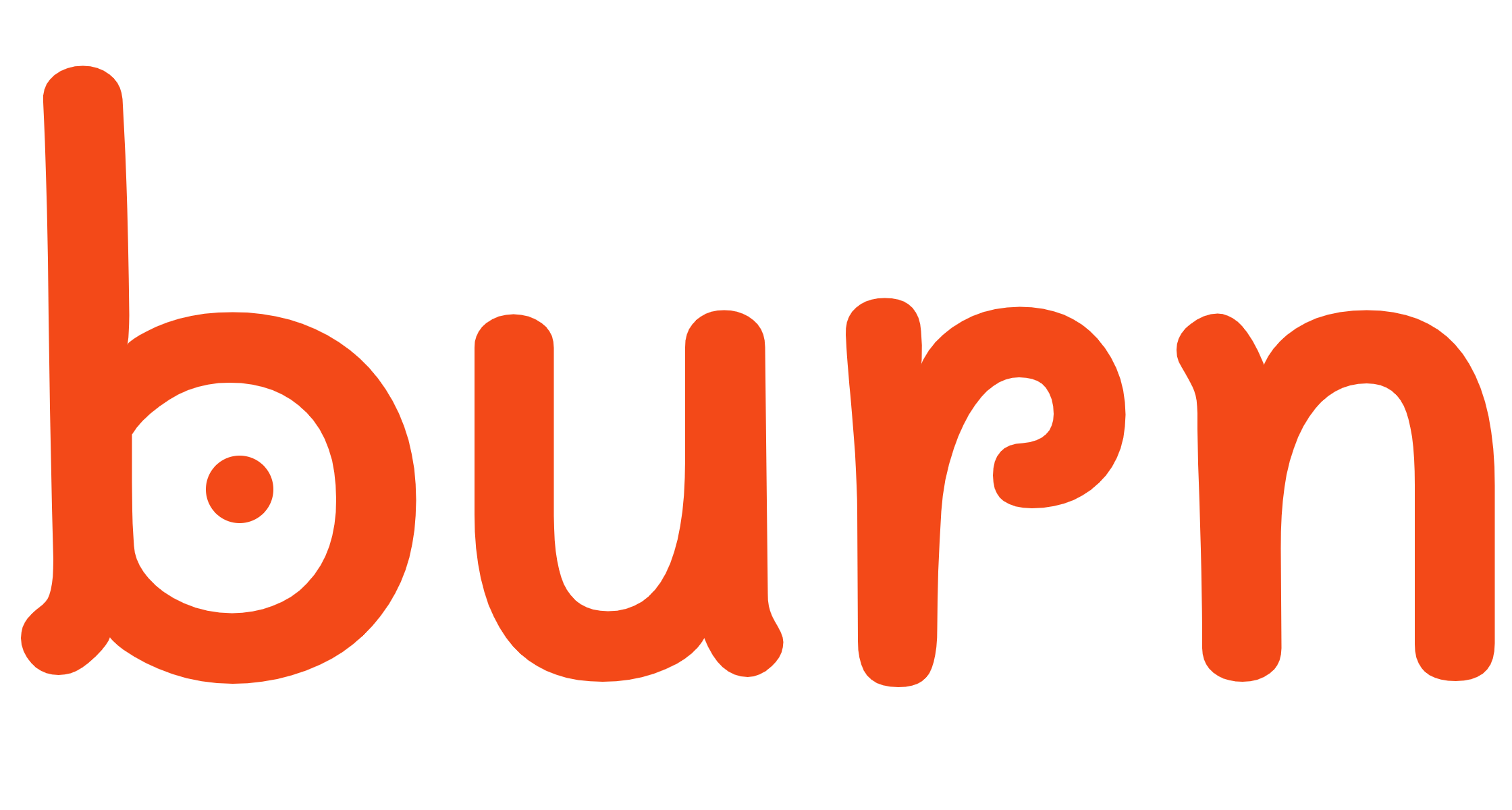
This library strives to serve as a comprehensive deep learning framework, offering exceptional flexibility and written in Rust. Our objective is to cater to both researchers and practitioners by simplifying the process of experimenting, training, and deploying models.
- Customizable, user-friendly neural network module 🔥
- Comprehensive training tools, inclusive of
metrics,logging, andcheckpointing📈 - Versatile Tensor crate equipped with pluggable backends 🔧
- Dataset crate containing a diverse range of utilities and sources 📚
- Import crate that simplifies the integration of pretrained models 📦
Burn-ndarray Backend
| Option | CPU | GPU | Linux | MacOS | Windows | Android | iOS | WASM |
|---|---|---|---|---|---|---|---|---|
| Pure Rust | Yes | No | Yes | Yes | Yes | Yes | Yes | Yes |
| Accelerate | Yes | No | No | Yes | No | No | Yes | No |
| Netlib | Yes | No | Yes | Yes | Yes | No | No | No |
| Openblas | Yes | No | Yes | Yes | Yes | Yes | Yes | No |
Burn-tch Backend
| Option | CPU | GPU | Linux | MacOS | Windows | Android | iOS | WASM |
|---|---|---|---|---|---|---|---|---|
| CPU | Yes | No | Yes | Yes | Yes | Yes | Yes | No |
| CUDA | No | Yes | Yes | No | Yes | No | No | No |
| MPS | No | Yes | No | Yes | No | No | No | No |
| Vulkan | Yes | Yes | Yes | Yes | Yes | Yes | No | No |
Burn-wgpu Backend
| Option | CPU | GPU | Linux | MacOS | Windows | Android | iOS | WASM |
|---|---|---|---|---|---|---|---|---|
| Metal | No | Yes | No | Yes | No | No | Yes | No |
| Vulkan | Yes | Yes | Yes | Yes | Yes | Yes | Yes | No |
| OpenGL | No | Yes | Yes | Yes | Yes | Yes | Yes | No |
| WebGpu | No | Yes | No | No | No | No | No | Yes |
| Dx11/Dx12 | No | Yes | No | No | Yes | No | No | No |
We keep an updated and curated list of models and examples built with Burn, see the burn-rs/models repository for more details.
The best way to get started with burn is to clone the repo and play with the
examples. This may also be a good idea to take a look the main
components of burn to get a quick overview of the fundamental building blocks. If
you're interested in how the framework works, you can read our
architecture document.
- MNIST train a model on CPU/GPU using different backends.
- MNIST Inference Web run trained model in the browser for inference.
- Text Classification train a transformer encoder from scratch on GPU.
- Text Generation train an autoregressive transformer from scratch on GPU.
Understanding the key components and philosophy of burn can greatly help when beginning to work
with the framework.
Nearly everything in burn is based on the Backend trait, which enables you to run tensor
operations using different implementations without having to modify your code. While a backend may
not necessarily have autodiff capabilities, the ADBackend trait specifies when autodiff is needed.
This trait not only abstracts operations but also tensor, device and element types, providing each
backend the flexibility they need. It's worth noting that the trait assumes eager mode since burn
fully supports dynamic graphs. However, we may create another API to assist with integrating
graph-based backends, without requiring any changes to the user's code.
At the core of burn lies the Tensor struct, which encompasses multiple types of tensors, including
Float, Int, and Bool. The element types of these tensors are specified by the backend and are
usually designated as a generic argument (e.g., NdArrayBackend<f32>). Although the same struct is
used for all tensors, the available methods differ depending on the tensor kind. You can specify the
desired tensor kind by setting the third generic argument, which defaults to Float. The first
generic argument specifies the backend, while the second specifies the number of dimensions.
use burn::tensor::backend::Backend;
use burn::tensor::{Tensor, Int};
fn function<B: Backend>(tensor_float: Tensor<B, 2>) {
let _tensor_bool = tensor_float.clone().equal_elem(2.0); // Tensor<B, 2, Bool>
let _tensor_int = tensor_float.argmax(1); // Tensor<B, 2, Int>
}As demonstrated in the previous example, nearly all operations require owned tensors as parameters,
which means that calling Clone explicitly is necessary when reusing the same tensor multiple
times. However, there's no need to worry since the tensor's data won't be copied, it will be flagged
as readonly when multiple tensors use the same allocated memory. This enables backends to reuse
tensor data when possible, similar to a copy-on-write pattern, while remaining completely
transparent to the user.
The 'Backend' trait is highly flexible, enabling backpropagation to be implemented using a simple backend decorator, which makes any backend differentiable.
use burn::tensor::backend::{ADBackend, Backend};
use burn::tensor::{Distribution, Tensor};
use burn_autodiff::ADBackendDecorator;
use burn_ndarray::NdArrayBackend;
fn linear<B: Backend>(x: Tensor<B, 2>, weight: Tensor<B, 2>, bias: Tensor<B, 2>) -> Tensor<B, 2> {
x.matmul(weight) + bias
}
fn main() {
type Backend = NdArrayBackend<f32>;
let weight = Tensor::random([3, 3], Distribution::Default);
let bias = Tensor::zeros([1, 3]);
let x = Tensor::random([3, 3], Distribution::Default);
let y = linear::<Backend>(x.clone(), weight.clone(), bias.clone());
// y.backward() // Method backward doesn't exist
let y = linear::<ADBackendDecorator<Backend>>(
Tensor::from_inner(x),
Tensor::from_inner(weight).require_grad(),
Tensor::from_inner(bias).require_grad(),
);
let grads = y.backward(); // Method exists
}The Module derive allows you to create your own neural network modules, similar to PyTorch. The
derive function only generates the necessary methods to essentially act as a parameter container for
your type, it makes no assumptions about how the forward pass is declared.
use burn::nn;
use burn::module::Module;
use burn::tensor::backend::Backend;
#[derive(Module, Debug)]
pub struct PositionWiseFeedForward<B: Backend> {
linear_inner: Linear<B>,
linear_outer: Linear<B>,
dropout: Dropout,
gelu: GELU,
}
impl<B: Backend> PositionWiseFeedForward<B> {
pub fn forward<const D: usize>(&self, input: Tensor<B, D>) -> Tensor<B, D> {
let x = self.linear_inner.forward(input);
let x = self.gelu.forward(x);
let x = self.dropout.forward(x);
self.linear_outer.forward(x)
}
}Note that all fields declared in the struct must also implement the Module trait. The Tensor
struct doesn't implement Module, but Param<Tensor<B, D>> does.
The Config derive lets you define serializable and deserializable configurations or
hyper-parameters for your modules or any components.
use burn::config::Config;
#[derive(Config)]
pub struct PositionWiseFeedForwardConfig {
pub d_model: usize,
pub d_ff: usize,
#[config(default = 0.1)]
pub dropout: f64,
}The derive also adds useful methods to your config, similar to a builder pattern.
fn main() {
let config = PositionWiseFeedForwardConfig::new(512, 2048);
println!("{}", config.d_model); // 512
println!("{}", config.d_ff); // 2048
println!("{}", config.dropout); // 0.1
let config = config.with_dropout(0.2);
println!("{}", config.dropout); // 0.2
}The Learner is the main struct that let you train a neural network with support for logging,
metric, checkpointing and more. In order to create a learner, you must use the LearnerBuilder.
use burn::train::LearnerBuilder;
use burn::train::metric::{AccuracyMetric, LossMetric};
use burn::record::DefaultRecordSettings;
fn main() {
let dataloader_train = ...;
let dataloader_valid = ...;
let model = ...;
let optim = ...;
let learner = LearnerBuilder::new("/tmp/artifact_dir")
.metric_train_plot(AccuracyMetric::new())
.metric_valid_plot(AccuracyMetric::new())
.metric_train(LossMetric::new())
.metric_valid(LossMetric::new())
.with_file_checkpointer::<DefaultRecordSettings>(2)
.num_epochs(10)
.build(model, optim);
let _model_trained = learner.fit(dataloader_train, dataloader_valid);
}See this example for a real usage.
Burn, including its burn-ndarray backend, can work in a no_std environment, provided alloc is
available for the inference mode. To accomplish this, simply turn off the default features in burn
and burn-ndarray (which is the minimum requirement for running the inference mode). You can find a
reference example in
burn-no-std-tests.
The burn-core and burn-tensor crates also support no_std with alloc. These crates can be
directly added as dependencies if necessary, as they are reexported by the burn crate.
Please be aware that when using the no_std mode, a random seed will be generated at build time if
one hasn't been set using the Backend::seed method. Also, the
spin::mutex::Mutex is used instead of
std::sync::Mutex in this mode.
Before contributing, please take a moment to review our code of conduct. It's also highly recommended to read our architecture document, which explains our architectural decisions. Please see more details in our contributing guide.
On Unix systems, run run-checks.sh using this command
run-checks.sh environment
On Windows systems, run run-checks.ps1 using this command:
run-checks.ps1 environment
The environment argument can assume ONLY the following values:
stdto perform checks usinglibstdno_stdto perform checks on an embedded environment usinglibcore
If no environment value has been passed, run both std and no_std checks.
Compile scripts/publish.rs using this command:
rustc scripts/publish.rs --crate-type bin --out-dir scripts
Run scripts/publish using this command
./scripts/publish crate_name
where crate_name is the name of the crate to publish
Burn is currently in active development, and there will be breaking changes. While any resulting issues are likely to be easy to fix, there are no guarantees at this stage.
You can sponsor the founder of Burn from his GitHub Sponsors profile. The Burn-rs organization doesn't yet have a fiscal entity, but other sponsor methods might become available as the project grows.
Thanks to all current sponsors 🙏.
Burn is distributed under the terms of both the MIT license and the Apache License (Version 2.0). See LICENSE-APACHE and LICENSE-MIT for details. Opening a pull request is assumed to signal agreement with these licensing terms.

